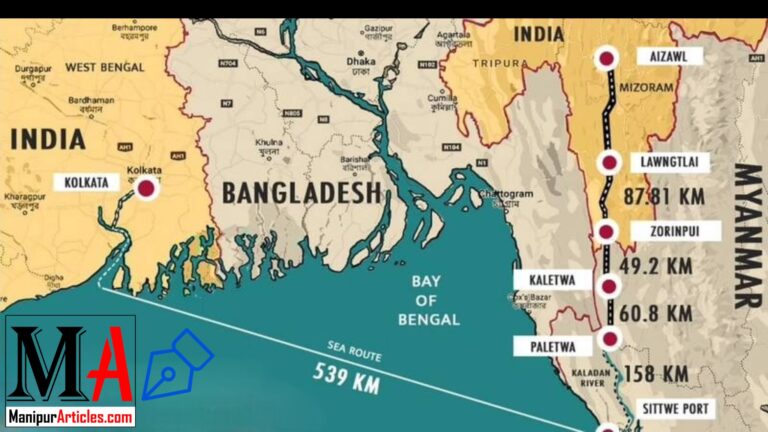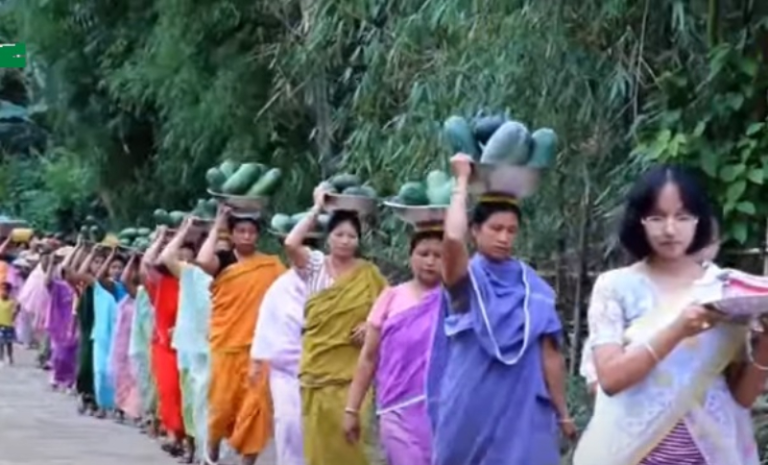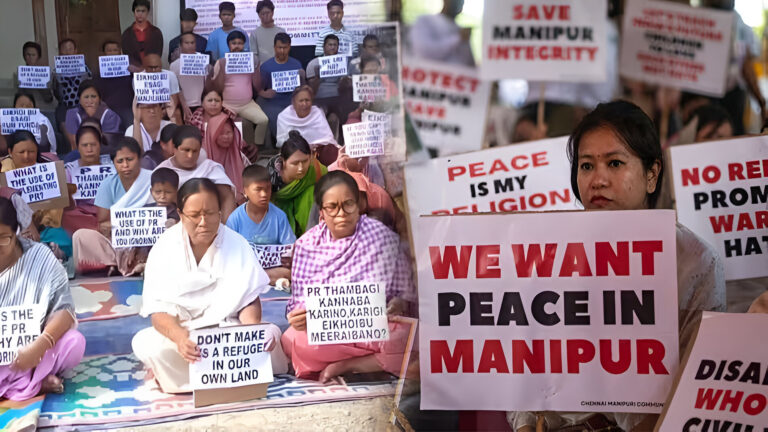Heisnam Tomba on the Violence in Manipur: A Reflection on Conflict and Culture
Short Summary:
Heisnam Tomba, a renowned Manipuri playwright, has spoken out about the ongoing violence in Manipur, emphasizing that such conflicts can happen anywhere in India. Tomba’s statement comes amidst the backdrop of widespread unrest in Manipur, with violent clashes and human rights violations affecting the local population. His comments highlight the deep-rooted societal and political challenges facing the state, and through his words, he draws attention to the broader implications of such violence on the country as a whole. Tomba’s insights push for a greater understanding of the human cost of conflict, urging the nation to reflect on its current trajectory.
The Manipur Conflict: A Broader Reflection on India’s Fragility
The recent violence in Manipur has cast a shadow over the state, leaving communities torn apart, families shattered, and the state’s social fabric in disarray. Amid this chaos, Heisnam Tomba, a prominent Manipuri playwright, has boldly stated that the unrest in Manipur could unfold anywhere in India. His words are not just a commentary on the state’s fragile situation but also a reflection of the challenges faced by India as a whole.
The violence in Manipur has drawn significant attention from national and international media, with reports of clashes between different ethnic groups, systemic violence, and the use of force by armed groups. The state, which has seen long-standing ethnic tensions, particularly between the Meitei and Kuki communities, is now in the grip of violent unrest that seems to defy simple resolution. Tomba’s statement challenges us to look beyond the regional lens and understand how such ethnic strife can occur in any part of India, irrespective of its history or political context.
Tomba’s Background and Relevance
Heisnam Tomba, widely known for his work in theater, is a significant figure in Manipuri culture. Through his plays, Tomba has often addressed the complexities of societal struggles, shedding light on themes of identity, conflict, and human rights. His most famous play, Kabui Keioiba (translated as “The Death of Kabui”), is a critical piece of art that delves into the political and social strife of the state. It uses the lens of Manipuri mythology to reflect on the impact of war and colonialism on indigenous people. Given this background, Tomba’s commentary on the present violence in Manipur comes with a unique perspective rooted in his extensive knowledge of the state’s history and culture
.
Why Is Heisnam Tomba’s Perspective Important?
Tomba’s statement that “Manipur can happen anywhere in India” is not just a warning; it’s a wake-up call. India is a diverse country with myriad ethnic groups, languages, and religious practices, but this diversity also poses challenges. When political, social, or economic systems fail to address the needs and grievances of various communities, it creates an environment ripe for conflict. Tomba’s words suggest that the violence in Manipur is not an isolated incident but part of a broader pattern that could take root anywhere in the country.
The playwright’s reflection highlights the dangers of ignoring long-standing societal issues such as marginalization, exclusion, and identity crises. Tomba’s commentary urges us to reconsider how we perceive ethnic and regional conflicts—not as rare occurrences but as potential threats that could manifest in other parts of India if the underlying issues are not addressed.
Understanding the Context of the Manipur Violence
The violence in Manipur has its roots in the complex interplay of ethnic identity, political representation, and economic disparity. The Meitei community, which is the dominant group in the state, has long felt marginalized in terms of access to resources, political power, and cultural recognition. Meanwhile, the Kuki tribal community, which has faced its own set of challenges, has been engaged in violent confrontations with the Meiteis. These clashes have escalated to the point where they have affected not just local communities but also broader societal structures, including education and healthcare
The recent violence began as ethnic clashes but quickly escalated into a larger conflict involving armed groups, the state military, and civilians. The government’s response to the violence has included imposing curfews and internet shutdowns, further exacerbating the situation. The turmoil has left many Manipuri citizens in a state of fear and uncertainty, making basic survival an everyday challenge.
The Impact on Manipuri Society
Beyond the immediate violence, the social and psychological impact of the conflict in Manipur has been profound. People in the state have faced not only the fear of physical harm but also the trauma of losing loved ones and seeing their homes and communities destroyed. For the younger generation, the violence has created a generation gap where access to education, safety, and opportunity has been significantly compromised. This has long-term implications for the state’s development, as many young people are either displaced or forced into survival modes.
Heisnam Tomba, through his plays, has always portrayed the struggle of individuals against larger systemic forces. His work often focuses on how society, government, and culture intersect to either uplift or destroy a community. The current situation in Manipur resonates deeply with Tomba’s past work. He sees the state’s experience as a reflection of the breakdown of cultural, political, and social systems. Tomba’s critique, therefore, goes beyond the violence itself, pointing to a deeper malaise that afflicts the state and, by extension, India as a whole.
Tomba’s Call for Unity and Reflection
In his statement, Tomba stresses the need for a broader societal reflection on the nature of violence and its implications. He suggests that the solution lies not just in dealing with the immediate violence but in addressing the root causes that fuel such conflicts. These include addressing the historical grievances of ethnic communities, ensuring better political representation, and fostering economic equality. Tomba believes that these steps are essential if India is to avoid a future where more regions face similar conflicts.
Tomba’s call for unity emphasizes that the Manipur situation is a microcosm of India’s larger social and political challenges. The themes of identity, power, and resources are issues that many communities across the country face. By recognizing this, Tomba hopes to encourage dialogue and action that can prevent such violence from spreading to other parts of India.
What Can India Learn from the Manipur Crisis?
India’s diversity is its strength, but it can also be a source of tension when communities feel their rights and identities are threatened. The ongoing conflict in Manipur highlights the need for careful management of this diversity. What can India learn from Manipur’s crisis?
- Better Governance and Representation: Ensuring that all ethnic and regional communities are fairly represented in the political system is crucial for maintaining peace. Political leaders must work towards ensuring that no community feels excluded from the decision-making process.
- Economic Development: Economic disparities between communities can fuel unrest. Development policies must focus on reducing inequality, especially in conflict-prone areas like Manipur, where a large portion of the population faces economic hardships.
- Cultural Sensitivity and Dialogue: India must embrace a culture of open dialogue that respects the identities and cultures of its various communities. By promoting understanding and empathy, it can prevent conflicts from turning violent.
- Addressing Historical Grievances: Historical injustices often lie at the heart of many conflicts. Acknowledging past wrongs and working towards reconciliation is key to healing and preventing future violence.
Conclusion
Heisnam Tomba’s insights into the violence in Manipur serve as a powerful reminder that such conflicts are not unique to one state—they are symptomatic of deeper issues within the fabric of Indian society. As Tomba suggests, the unrest in Manipur could be a lesson for the rest of India. It is up to all of us—citizens, leaders, and policymakers—to reflect on these lessons and work together to build a future that is peaceful, just, and inclusive.
FAQs
- What caused the violence in Manipur? The violence in Manipur is rooted in long-standing ethnic tensions between the Meitei and Kuki communities, as well as political and economic disparities.
- How has Heisnam Tomba contributed to the discourse on Manipur’s violence? Heisnam Tomba, through his plays and statements, has provided a cultural and philosophical perspective on the issues that fuel the violence in Manipur.
- What are the implications of the Manipur violence for the rest of India? Tomba’s statement suggests that the unrest in Manipur could spread to other regions if the underlying issues of identity, representation, and economic disparity are not addressed.
- How can India prevent more conflicts like the one in Manipur? India can prevent similar conflicts by promoting political representation, economic equality, cultural dialogue, and acknowledging historical grievances.
- What role does education play in resolving conflicts in Manipur? Education plays a crucial role in resolving conflicts by promoting understanding, awareness, and empathy among different communities, particularly the younger generation.



